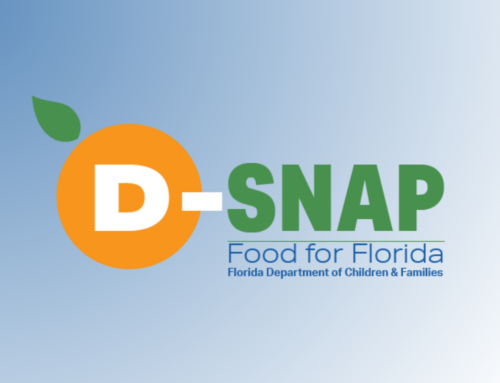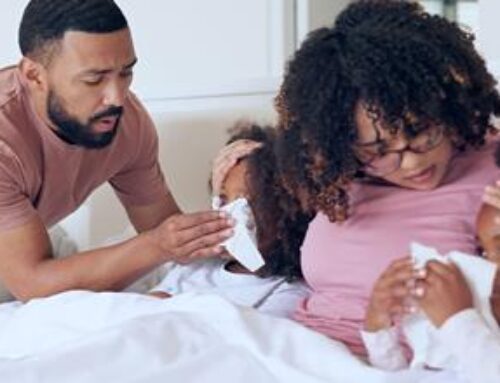Halloween Health and Safety Tips
Keep these tips in mind to help ensure your children have a healthy and safe Halloween.
Costumes
- Plan costumes that are bright and reflective. Consider adding reflective tape or striping to costumes and trick-or-treat bags for greater visibility.
- Make sure that shoes fit well, and that costumes are short enough to prevent tripping, entanglement, or contact with flame.
- Look for “flame resistant” on the costume labels. Wigs and accessories should also clearly indicate this.
- Consider non-toxic makeup and decorative hats as safer alternatives to masks. Makeup should be tested ahead of time on a small patch of your child’s skin to ensure there are no unpleasant surprises or allergic reactions on the big day. Toxic ingredients have been found in cosmetics marketed to teens and tweens.
- Hats should fit properly to prevent them from sliding over eyes and blocking vision.
- Avoid any sharp or long swords, canes, or sticks as a costume accessory. Your child can easily be hurt by these accessories if he or she stumbles or trips.
- Do not use decorative contact lenses without an eye examination and a prescription from an eye care professional. While the packaging on decorative lenses will often make claims such as “one size fits all,” or “no need to see an eye specialist,” getting decorative contact lenses without a prescription is both dangerous and illegal. This can cause pain, inflammation, and serious eye disorders and infections, which may lead to permanent vision loss.
Pumpkins
- Never allow small children to carve pumpkins. Children can draw a face with markers. Then parents can do the cutting. For the best control while carving, the American Society for Surgery of the Hand (AAHS) recommends adults use a small pumpkin saw (sold with other Halloween goods) in small strokes, directing the blade away from themself and others. The AAHS advises against using larger blades, which can become lodged in the pumpkin and cause injuries when pulled out. If injured by a blade, here are some guidelines to help you determine whether or not stitches are needed.
- Consider using a flashlight or glow stick instead of a candle to light your pumpkin. If you do use a candle, a votive candle is safest.
- Do not place candlelit pumpkins on a porch or any path where visitors may pass close by. They should never be left unattended.
At Home
- Remove tripping hazards to keep your home safe for visiting trick-or-treaters. Keep the porch and front yard clear of anything a child could trip over such as garden hoses, toys, bikes, and lawn decorations.
- Check outdoor lights and replace burned-out bulbs.
- Sweep wet leaves from sidewalks and steps to prevent anyone from slipping on them.
- Restrain pets so they do not jump on or bite a trick-or-treater
On the Trick-or-Treat Trail
- To help protect children not yet eligible for COVID-19 vaccines, try to stick with outdoor trick-or-treating. Find other Halloween COVID-19 safety tips here.
- Always accompany young children on their neighborhood rounds. If your older children are going alone, plan and review the route that is acceptable to you. Agree on a specific time when they should return home and get flashlights with batteries for everyone. If Halloween doesn’t start until after dark where you live and you have younger children, check with your town or park district for Halloween activities offered earlier in the day.
- Only go to homes with a porch light on.
- Never enter a home or car for a treat. Notify law enforcement authorities immediately about of any suspicious or unlawful activity.
- Review with children how to call 9-1-1 (or their local emergency number) if they ever have an emergency or become lost or is prone to wander. See “Help Prevent Your Child from Going Missing” for tips.
- Know how to reduce your child’s risk of a pedestrian injury―the most common injury to children on Halloween.
- Stay in a group and communicate where they will be going.
- Remember reflective tape for costumes and trick-or-treat bags.
- Carry a cell phone for quick communication.
- Remain on well-lit streets and always use the sidewalk.
- If no sidewalk is available, walk at the far edge of the roadway facing traffic.
- Never cut across yards or use alleys.
- Only cross the street as a group in established crosswalks (as recognized by local custom). Never cross between parked cars or out of driveways.
- Don’t assume the right of way. Motorists may have trouble seeing trick-or-treaters. Just because one car stops, doesn’t mean others will!
Healthy Halloween
- Give your child a good meal prior to parties and trick-or-treating; this will discourage filling up on Halloween treats.
- Consider offering non-edible goodies to trick-or-treaters visiting your home. Halloween is one of the trickiest days of the year for children with food allergies. Food Allergy Research & Education’s Teal Pumpkin Project, which promotes safe trick-or-treating options for food-allergic children, suggests items such as glow sticks, spider rings, vampire fangs, pencils, bubbles, bouncy balls, finger puppets, whistles, bookmarks, stickers and stencils.
- Keep an eye on what your child has in their mouth at all times while on the trick-or-treat trail. Wait until children are home to sort and check treats. Though tampering is rare, it can happen. A responsible adult should closely examine all treats and throw away any spoiled, unwrapped, or suspicious items. Once your child is ready to enjoy treats at home, keep in mind that babies and toddlers should not have any hard candies, caramel apples, popcorn, gum, small candies (jelly beans, etc.), gummy candy, pumpkin seeds, or anything with whole nuts. Candy wrappers, stickers, small toys, or temporary tattoos can be a choking hazard, as well. As all parents know, babies and toddlers will put just about anything into their mouths!
- Try to ration treats for the days and weeks following Halloween. If you keep candy guidelines realistic, consistent, and positive, your Halloween is less likely to be about arguing or controlling candy. Make a plan together so everyone knows what to expect. It’s also a great opportunity to teach your kids about moderation, balance, and healthful indulging.








